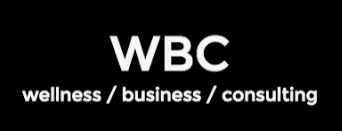Success as an entrepreneur takes more than just a good business idea.
When it comes to entrepreneurial success, your state of mind is critical. Approaching your business with positivity and a goal-oriented mindset not only helps keep you motivated through the ups and downs, it can also inspire and encourage your team to work together toward common goals.
Below, a group of successful business leaders share some of the actions you can take to cultivate an "entrepreneurial mindset" and how doing so themselves has impacted their careers. Read on to learn how to apply these philosophies to your own day-to-day life.
1. Challenge yourself and get over your ego
Entrepreneurs can easily become paralyzed by fear and unable to move forward if they're second-guessing their every move, says Gabriel Krajicek, CEO of Kasasa.com. Instead, it can help to challenge yourself as if entrepreneurship was a game.
"You may win, you may lose, but you are resilient and can rebuild," Krajicek says. "It's just your ego that will be bruised. If you can get over your ego, you can accomplish incredible things."
2. Take small steps toward large goals
Kristin Kimberly Marquet, founder and creative director of Marquet Media, believes in the idea that "small steps lead to big strides." She says this mindset has helped her stay motivated and focused on her short-range and long-term goals.
"I've found that by taking more small steps, I am able to accomplish more and find more success," adds Marquet.
3. Learn to love the grind
Successful entrepreneurs learn to derive pleasure from doing the "hard things" every day in their business, says Samuel Thimothy, co-founder of OneIMS.
"Many beginner entrepreneurs underestimate the amount of work they will have to put in and the volume that it takes to achieve success in anything," Thimothy says. "If you don't learn to love the daily grind, there's a high probability that you will drop everything mid-way."
4. Think with tenacity and determination
According to Rachel Beider, CEO of Press Modern Massage, the mindset of an entrepreneur is one of tenacity, determination, and resilience that is focused on results, growth, and forward progress.
"An entrepreneur is unafraid of failure and embraces risk, driven by passion and a desire to make a positive impact," says Beider. "I have found that having this entrepreneurial mindset has helped me to stay focused and motivated in my career."
5. Know how to pivot when necessary and move forward
Adaptability to change is essential to the entrepreneurial mindset, says Jared Atchison, co-founder of WPForms, because no matter the industry you operate in, trends are in a constant state of flux.
"To ensure your growth and keep the needle moving, you have to be flexible enough to embrace the change in your respective industry," Atchison explains. "You have to be able to pivot and keep things going."
6. Look at success as a process, not a one-time event
For Stephanie Wells, co-founder and CTO of Formidable Forms, the right mindset for an entrepreneur is believing they can take on any challenge and find success. This, she says, gives you the courage to keep pushing forward and stay positive in the face of failure.
"This mindset or philosophy has greatly impacted my career and motivated me to do things that others labeled as impossible to accomplish," says Wells. "It helped me understand that success is a process, not an event."
7. Be present and open to new opportunities
Matthew Capala, CEO of Alphametic, advises entrepreneurs to stay in the present so they can explore new ways of doing things, new opportunities, and solutions to problems that may have seemed insurmountable.
"We miss so much by being in our heads and in our old ways of doing things that we may lose out on what is being presented to us in the present," Capala says.
8. Believe in your success and don't quit
Ryann Dowdy, founder of Be in the Room, says all successful business owners believe in their own success above all else.
"They don't question it or doubt it -- they believe that what they're working on will work," explains Dowdy. "That doesn't mean that the experience is without its challenges, but the deep-rooted belief in the outcome makes the challenges easier to withstand."
Original article here in INC Magazine










